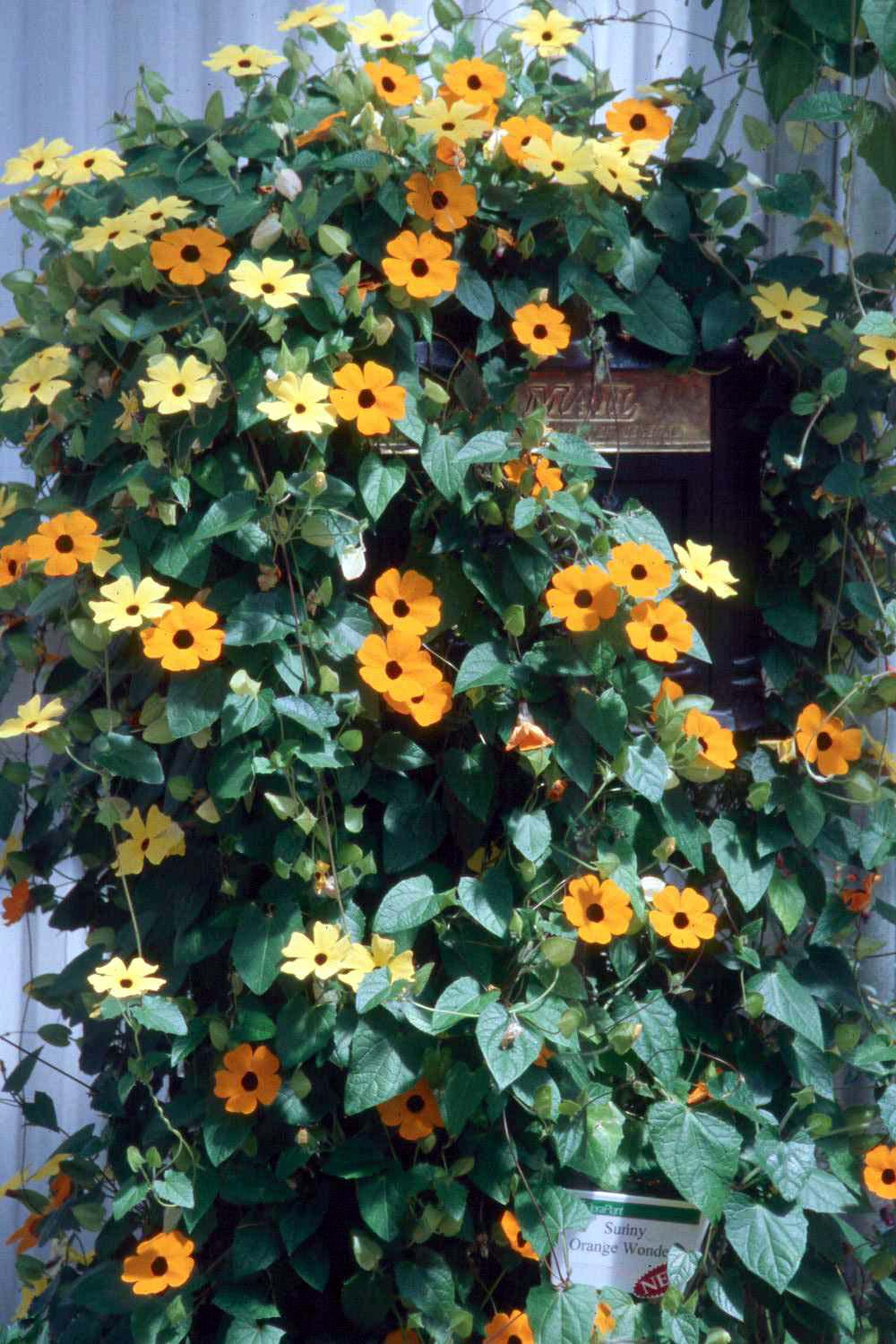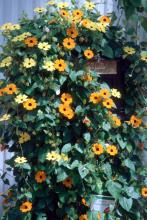Information Possibly Outdated
The information presented on this page was originally released on July 2, 2001. It may not be outdated, but please search our site for more current information. If you plan to quote or reference this information in a publication, please check with the Extension specialist or author before proceeding.
Black-eyed Susan vines are perfect for all gardens
By Norman Winter
MSU Horticulturist
Central Mississippi Research & Extension Center
One of the most striking vines for the southern landscape is about to get a new infusion of promotion thanks to the debut of two new varieties. Sunny Orange Wonder and Sunny Lemon Star are two new black-eyed Susan vines (Thunbergia alata) being introduced by BallFlora Plant that will hopefully be making their way to garden centers next spring.
Black-eyed Susan vines have been around but are much underused. To date, Susie is the most recognized variety and comes in yellow, orange and white. Angel Wings has white flowers and an ever-so light fragrance.
The colorful bright orange, yellow or white flowers, resembling black-eyed Susans, adorn a vigorous climbing annual and all in one season. I frequently talk to gardeners who will practically swear these flowers are yellow or orange with brown buttons similar to a rudbeckia, but they will see the difference if they look closely. These are actually tubular flowers that are brownish-purple inside.
The black-eyed Susan is a very versatile vine. It can be grown at the entrance to the cottage garden or as a bright addition to the tropical garden. Regardless, grow them over an arbor along a fence. They will even work on the mailbox.
Some of the prettiest companion plants in the cottage garden are perennial blue salvias, such as Victoria Blue, Salvia indigo-spires or the Blue Anise sage. I also like the new Angelmist angelonias as lower level plants. Tall perennial summer phlox planted in front also make an impressive show.
For the tropical garden, try combining with the Princess Flower (Tibouchina urvilleana) or red cannas and in proximity to bold foliage of bananas and elephant ears.
Choose a site in full sun to partial shade and plant after the last frost of the year. Prepare the soil deeply by adding 3 to 4 inches of composted pine bark and humus and tiling to a depth of 8 to 10 inches. While tilling, incorporate 2 pounds per 100 square feet of bed space a slow-release, 12-6-6 fertilizer.
Set out nursery-grown transplants at the same depth they were growing in the container. It is also easy to grow from seed. Sow three seeds about one-fourth inch deep, water and cover with mulch. Germination takes 10 to 21 days. Remove the weakest seedling by cutting.
Feed with a light application of the fertilizer every four to six weeks. Keep well watered to keep them growing vigorously. The black-eyed Susan vine climbs easily so provide a sturdy structure. Occasionally, spidermites can be a problem, so watch and treat early if necessary.
Keep your eye out at garden centers for a close relative of the black-eyed Susan vine called the Sky Flower. The Sky Flower, known botanically as Thunbergia grandiflora, is a very vigorous tropical vine that produces large blue trumpet shaped flowers almost the size of an allamanda flower.
You will want to buy this one in at least a gallon-sized container in the spring, and you will be rewarded with loads of flowers from late summer through fall. I have seen it come back from the ground these past few mild winters in Brookhaven, Miss., but most of us will want to take cuttings, dig up and cut back severely or treat as an annual.
Once you start growing vines, you really get hooked, and the black-eyed Susan vine is one you will want to try. If you see the Sky Flower try it, too!



